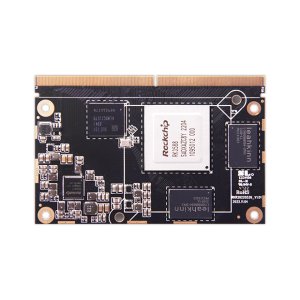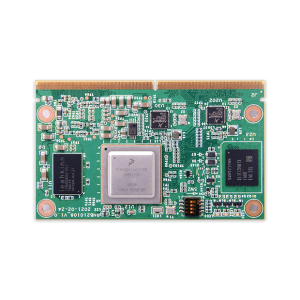Understanding System on Module (SoM) and Its Applications in Embedded Systems
Understanding System on Module (SoM) and Its Applications in Embedded Systems
Blog Article
Edge computing has appeared as a progressive tendency in the technology business, enabling faster knowledge handling and paid off latency by bringing computational power nearer to where data is created. An integral innovation pushing that transformation could be the increase of imx8m nano computer on module which are small, effective, and versatile processing models designed to include effortlessly into tailored electronics systems.

The Role of Pc on Adventures in Edge Processing
Computer on Modules have become fundamental in side computing because of their ability to streamline electronics style while sustaining strong handling capabilities. Based on a current report by MarketsandMarkets, the world wide edge processing industry is predicted to develop from $40.84 billion in 2021 to $132.11 million by 2026, with COMs enjoying an important position in that expansion.
These segments are especially impactful in industries requiring real-time data analysis at the edge. As an example, the transportation business employs COMs in autonomous cars for real-time decision-making, while smart cities release them to control systems like traffic movement and power distribution.
Compact and Versatile Style
One of many standout faculties of Computer on Modules is their small and modular design. This permits developers to incorporate high-performance computing power in to side units without the need for extensive equipment redesign. A survey by IoT Analytics found that 68% of companies utilizing IoT alternatives consider modular equipment like COMs vital for quick deployment and scalability.
COMs also help personalized configurations, creating them suitable for a wide range of applications, from commercial automation to healthcare. Their ability to adjust to certain requirements is a operating force behind their use in side research systems.
Power Performance and Efficiency
Edge research units often work in conditions with confined energy resources. COMs handle this challenge by providing improved energy efficiency without limiting on computational strength. A examine by Allied Market Study outlined that energy-efficient edge research options are anticipated to dominate the industry through 2030, placing COMs as a crucial element for reaching this goal.
Also, with developments in processors and integrated design, COMs now offer the performance needed for AI-driven programs at the edge. This not merely increases real-time features but additionally decreases dependence on centralized cloud systems.
Why the Potential Belongs to COMs
With international data era projected to reach 175 zettabytes by 2025, edge computing is set to be more integrated than ever. Computer on Modules provide an adaptable, energy-efficient, and scalable alternative for control this influx of data. Their relevance across diverse sectors like healthcare, manufacturing, and telecommunications just underscores their vital position in shaping the future of side computing.
COMs are no more only a technological development; they're the backbone of next-generation side techniques operating creativity and efficiency across the globe. Because the need for side computing is growing, so will the importance and impact of COMs in this fast evolving landscape. Therefore, it's safe to say that Computer on Adventures are here to keep and can continue surrounding the ongoing future of edge computing.

Realization
Side computing is transforming the way we process and use knowledge, with Computer on Modules at the forefront with this revolution. Their small design, versatility, power performance, and performance make them a great alternative for handling real-time data at the edge. As industries significantly rely on side research because of their operations, COMs can enjoy an essential position in operating development and performance in these systems. Report this page